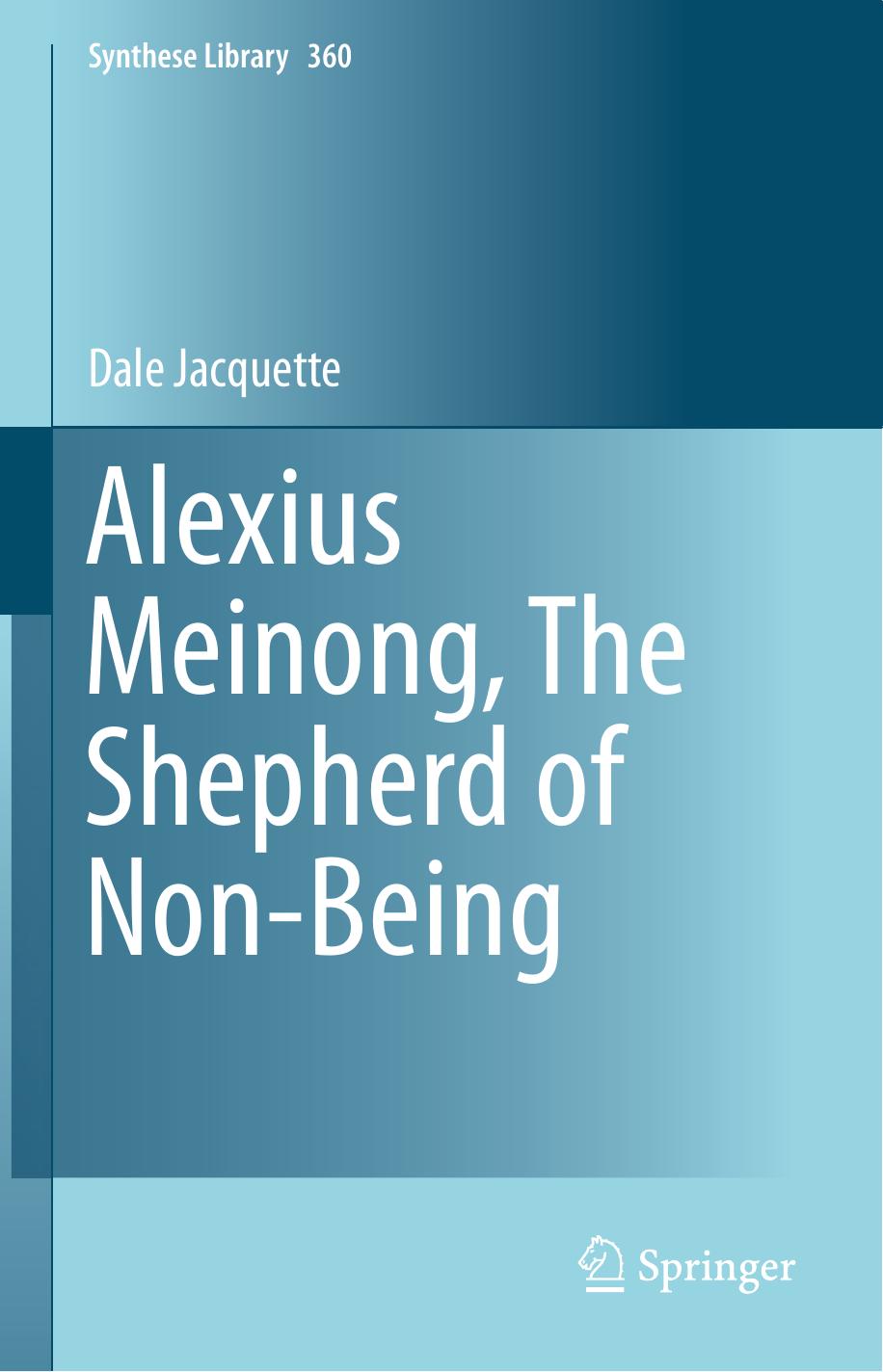Alexius Meinong, The Shepherd of Non-Being by Dale Jacquette

Author:Dale Jacquette
Language: eng
Format: epub, pdf
Publisher: Springer International Publishing, Cham
It should be obvious that the property N of being, having, exemplifying or instantiating nothing(ness) in a Meinongian environment is equivalent to, and actually an abbreviation in linguistic expression for nothing-more-than-something-intendable, or nothing-more-than-an-intendable-object. In that appropriately paradoxical-sounding phrase, neo-Meinongian nothing(ness) is understood like the category of something, except that whereas some somethings exist, there is only one nothing and it does not exist. This is not an effort at obscurity, but a literal statement of implication from the modest assumptions being considered. It would, could and should be argued that there is the need for some such concept or category in a complete Meinongian object theory logic and semantics, making the only interesting first question whether or not such a concept or category deserves being called nothing, nothing(ness) or N. Property N in Meinong’s intentionalist non-Fregean (Frege would likely say psychologistic) semantics is also the name of the intended object nothing(ness), which is to say of nothing in the only sense in which the proposed extension of Meinongian object theory can or needs to recognize it. Properties or concepts though unsaturated functions are also intended objects, as even Frege allows in a qualified sense, and the suggestion here is that when we think or speak of nothing as an intended object, N, we are thinking or speaking of nothingness. The property is construed here as that of being nothing and interpreted in neo-Meinongian object theoretical terms as (superveniently, extraconstitutive) nonexistent bare naked intendability or of being nothing other than an intendable object. That is the analysis in a nutshell, but why should anyone other than its doting designer want to accept it or even lend it serious consideration?
Terminological choices are never trivial or innocent, and it is important to have good reasons for potentially philosophically loaded nomenclatures. The rationale here for calling nothing(ness), nothing-more-than-something-intendable or nothing-more-than-an-intendable-object, is that we must be able to speak of objecthood in Meinongian object theory, and hence in minimalist terms of an intended object that has no other properties than being intendable. The point of rehearsing many different contexts in which philosophers and other language users deploy the word ‘nothing’ and ‘nothingness’ is to show that in such applications discourse putatively about nothing or nothingness amounts to referring to something manifestly intendable but nothing more. If N-nothing(ness) were not intendable, then language users could not even ostensibly be thinking of or referring to it, contrary to established grammatical usage, interpreted as a Meinongian semantics approaches at face value the meaning of all other colloquial discourse. It would be objectionably draconian to eliminate discourse ostensibly about nothing or nothingness as meaningless on the grounds that it cannot be otherwise explained. If you think about nothing(ness), or we can say more cautiously, if it is possible to think about nothing(ness), then you are or it is possible to be thinking only of bare naked nonexistent objecthood.
Being intendable or intendability can therefore not be eliminated from N-nothing(ness)’s Sosein, if it is to be considered something nonexistent about which we can think and refer to in a Meinongian semantic domain.
Download
Alexius Meinong, The Shepherd of Non-Being by Dale Jacquette.pdf
This site does not store any files on its server. We only index and link to content provided by other sites. Please contact the content providers to delete copyright contents if any and email us, we'll remove relevant links or contents immediately.
The remains of the day by Kazuo Ishiguro(8815)
Tools of Titans by Timothy Ferriss(8212)
Giovanni's Room by James Baldwin(7188)
The Black Swan by Nassim Nicholas Taleb(7009)
Inner Engineering: A Yogi's Guide to Joy by Sadhguru(6722)
The Way of Zen by Alan W. Watts(6503)
Asking the Right Questions: A Guide to Critical Thinking by M. Neil Browne & Stuart M. Keeley(5630)
The Power of Now: A Guide to Spiritual Enlightenment by Eckhart Tolle(5603)
The Six Wives Of Henry VIII (WOMEN IN HISTORY) by Fraser Antonia(5394)
Astrophysics for People in a Hurry by Neil DeGrasse Tyson(5130)
Housekeeping by Marilynne Robinson(4328)
12 Rules for Life by Jordan B. Peterson(4249)
Double Down (Diary of a Wimpy Kid Book 11) by Jeff Kinney(4204)
The Ethical Slut by Janet W. Hardy(4172)
Skin in the Game by Nassim Nicholas Taleb(4161)
Ikigai by Héctor García & Francesc Miralles(4123)
The Art of Happiness by The Dalai Lama(4063)
Skin in the Game: Hidden Asymmetries in Daily Life by Nassim Nicholas Taleb(3929)
Walking by Henry David Thoreau(3892)
